Design Tasmania
Corner of Brisbane and Tamar streets
Launceston, 7250
Tasmania
info@designtasmania.com.au
+61 3 6331 5506
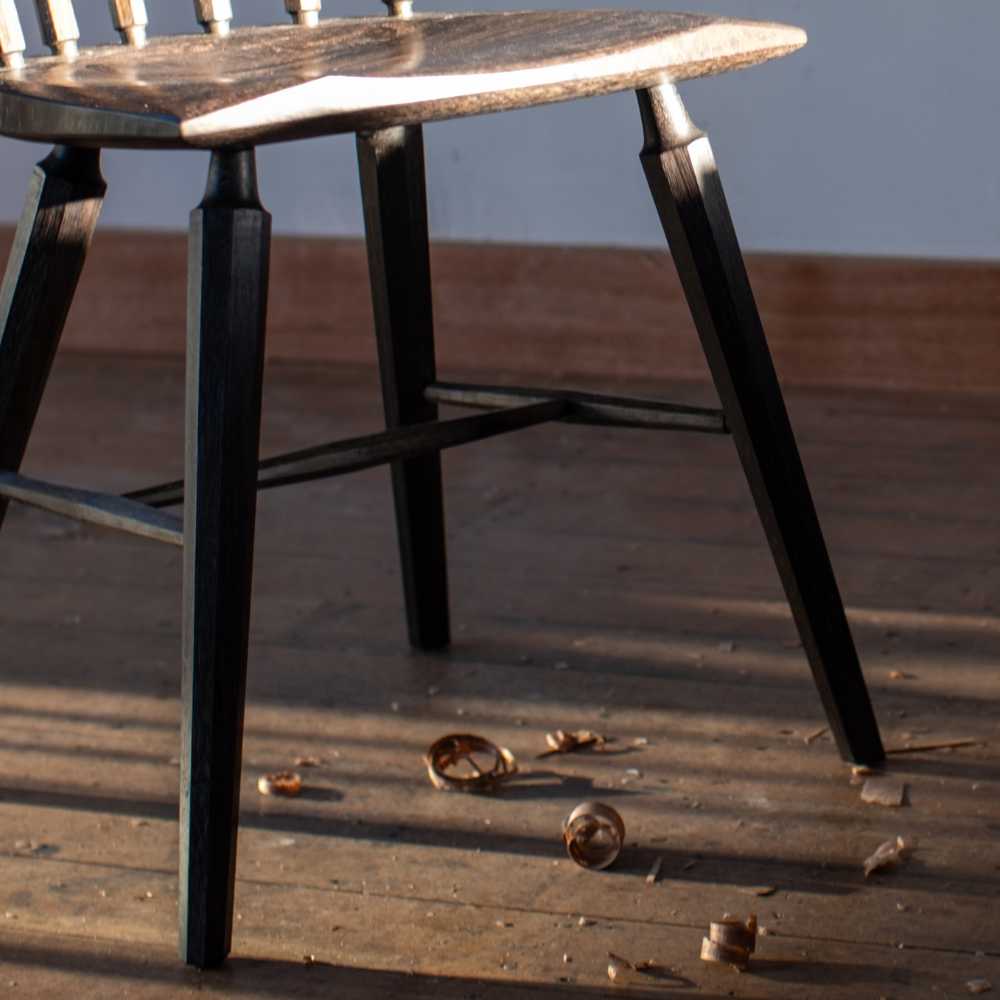
Tasmania Makes 2023
8 December 2023 – 17 March 2024
Tasmania Makes is a new annual platform designed to celebrate and invigorate Tasmania's rich culture of creativity and craftsmanship in design. Known for our thoughtful, resourceful and naturally sustainable way of working, Tasmania boasts an ever-expanding reputation for its reliably good design and distinct designer/maker vernacular.
Living on an island as a maker presents a unique set of challenges and advantages, due to our inherent geographical isolation and small community-scale. This in turn creates a self-sufficient culture - we make from (mostly) local materials, we design driven by local need, and we make for each other, bolstered by the inspiring environment and lifestyle we are blessed with in Tasmania. While the upside of this is a rich culture of Tasmanian-made product, produced for ready-made markets in aligned local cultural industries such as architecture, hospitality and events - our busy studio makers, mostly a one-person practice, have little time to take stock and refine their offering in the context of the moment.
Tasmania Makes is offered as a supported platform to ensure our small island industry is kept robust, forward thinking and thriving. It is an opportunity to come together with other designers and makers for peer-to-peer support, to step outside of everyday practice and try something new, or to find ways to improve their business towards greater sustainability. From the South East Coast to the Cradle Coast, Hobart to Launceston, eleven designers from traditional design disciplines spanning furniture, ceramics, jewellery and object design have been invited to participate in this program, responding to new local or global imperatives.
The design innovators featured in Tasmania Makes, include an architect crafting small-scale objects for ageing in place to a timber craftsperson exploring sustainable surfboard materials and a master ceramicist exploring composting toilet designs, epitomizing the distinctive Tasmanian approach to crafting the future.
Simon Ancher
Simon Ancher is a designer-maker living and working in Launceston Tasmania. After studying furniture design in 2000 he worked from the Designer Makers Cooperative workshop in North Hobart, where he developed his practice specialising in one-off commissioned work and interior fit-outs. He then moved to Launceston to study Environmental Design. From 2006 Ancher spent 10 years as Program Director of Furniture Design for the school of Architecture & Design, UTAS, Launceston. Through his practice, Simon Ancher Studio, he continues to develop his own furniture range as well as undertake commissioned work including public art and seating. Ancher’s work is informed by the use of appropriate materials over style and is inspired by observation.
Simon Ancher Studio website



Daybed
The Day Bed is a flexible object that offers a comfortable platform for rest and casual conversation. It can accommodate one as a lounging experience lying flat or supported in several reclining positions, or a few people in the round as a flat bench seat. This object is a welcome addition to our current range and can be paired with couches, lounge chairs, side tables, coffee tables and beds.
Prototype manufactured by Simon Ancher studio
Materials: blackwood, powder coated steel and tan leather

Nanna Bayer
I am a ceramicist specialising in the Nerikomi technique, utilising thin colourful porcelain to create functional and sculptural objects. I started the practice 31 years ago, and have since developed a signature style that has won me international recognition and acclaim. Before moving to Tasmania in 2011 my work had been shown in 60 exhibitions in 17 countries. I have given invited talks, demonstrations and workshops at symposia and conferences around the world.
I co-organised the Australian Ceramics Triennale in 2019 in Hobart, completed a 1-year Artist In Residency at CAT 2020, and last year had a Solo Commission Exhibition at Devonport Regional Gallery.
Nana Bayer Studio - Instagram
Composting Toilet Thrones
Growing up in the strict minimalist Scandinavian design environment has found me rebelliously designing functional objects, which are always full of colour, fun and humour. Since antiquity, the snake has been symbolic of both medicine and toxicology. Using humour I am drawing attention to the fact that roughly 35,000 litres per year per household flushes our toilet waste out of sight and out of mind.
Isn’t flushing precious drinking water criminal in a dry country of bushfires?
One-of-a-kind
Materials: ceramics, rope, wood, steel fittings
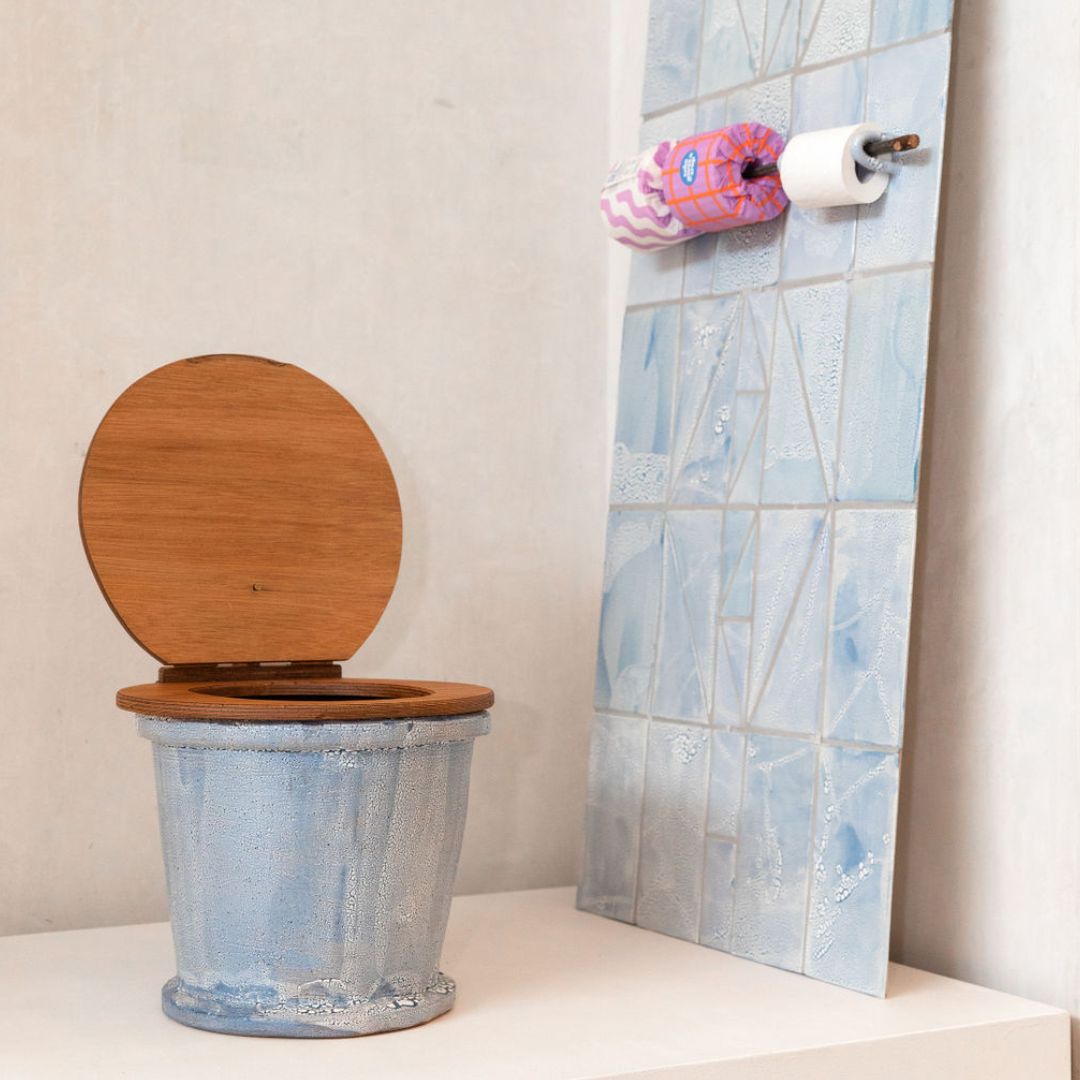
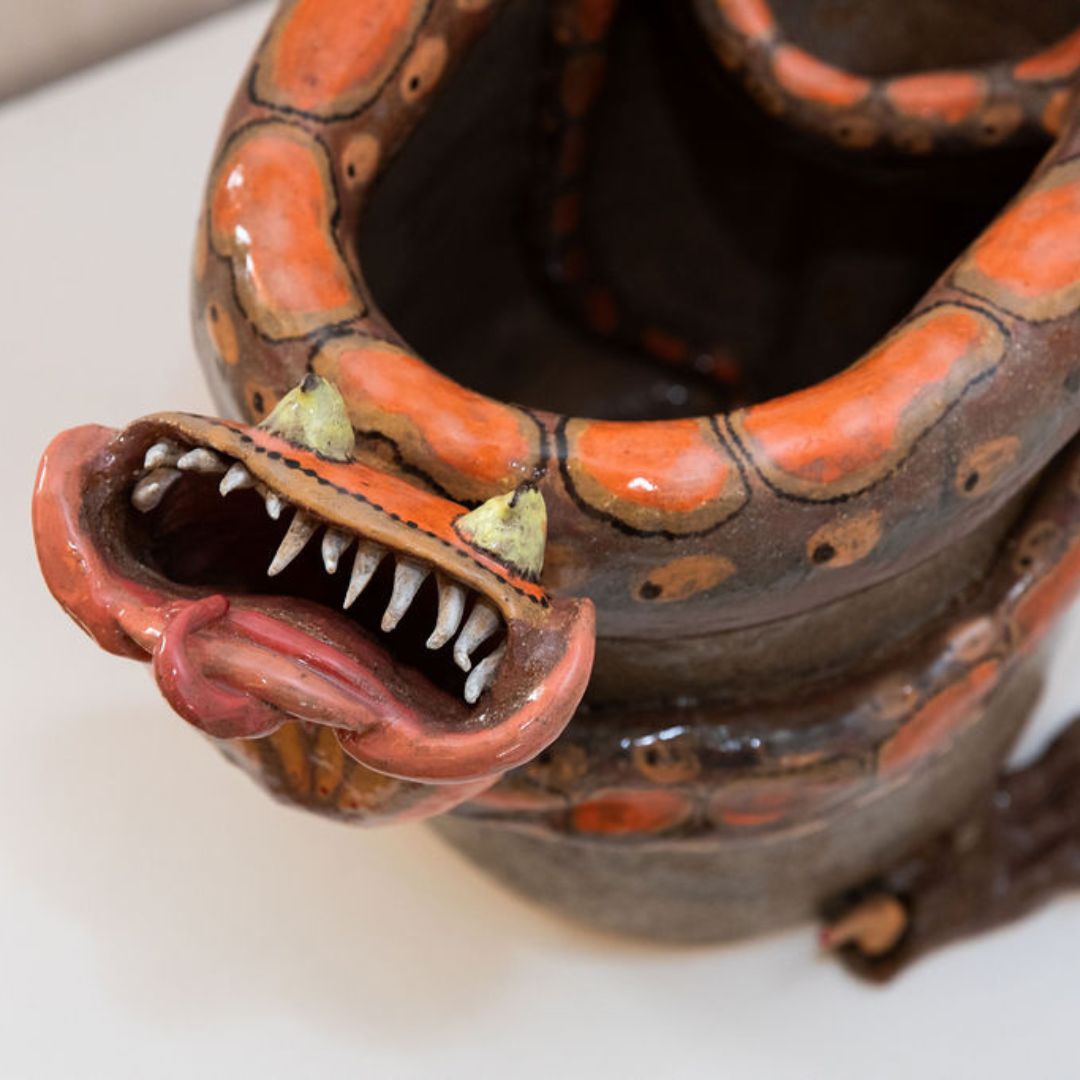

Christopher Clinton
Christopher is a Hobart-based architect, designer and maker.
Originally from a trade background, his vision combines a craftsman’s eye for detail with practical design rigour and an in-depth knowledge of materials and construction.
Chris’ design-by-making process and the making of finely-crafted furniture and objects is inextricably linked to his practice of architecture.
Christopher Clinton - Website
Christopher Clinton - Instagram
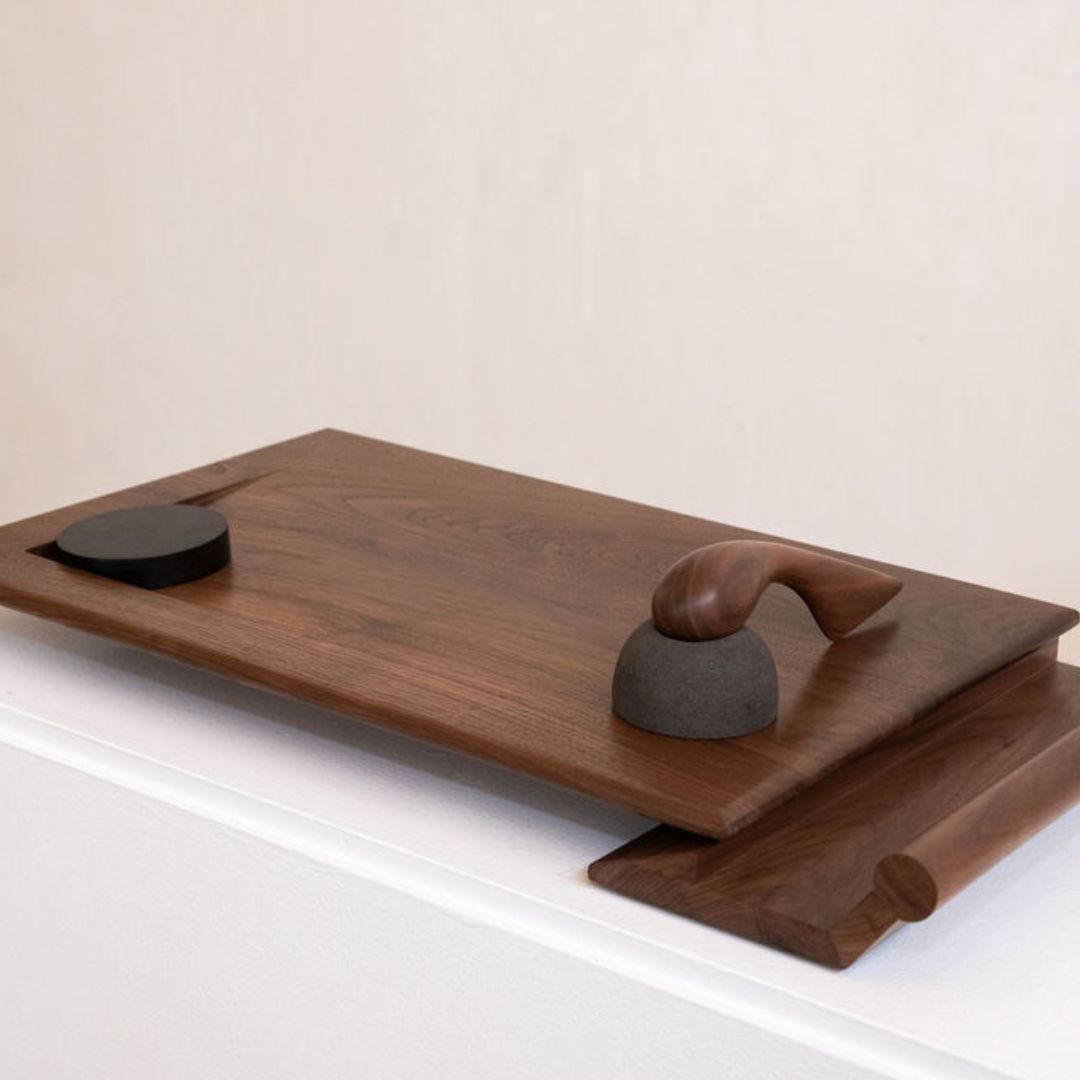
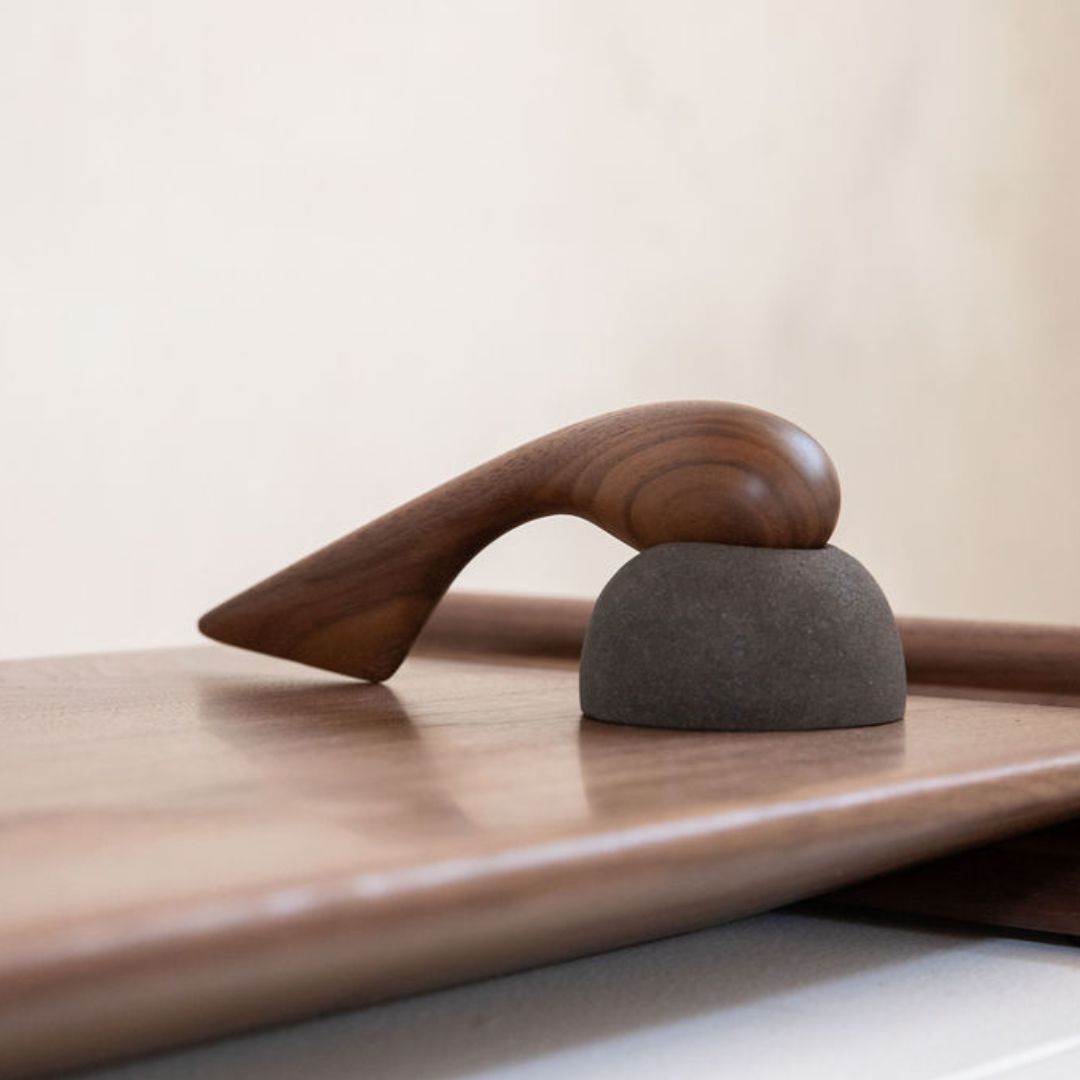
Adaptive Kitchen Ensemble
Working across architecture, object design and making, I’m intrigued by everyday objects intricately woven into the spaces I design, influencing the user’s interaction with both form and function.
My submission for this exhibition deliberately explores adaptive assistive design, focusing on the extension of objects in spaces, and delves into the realm of architecture for aging in place and individuals with limited mobility. This aims to redefine inclusivity in design by highlighting the relationship between objects and the architectural framework, reflecting my commitment to creating environments that not only engage aesthetically but also enhance the quality of life for diverse user groups.
Prototype manufactured by Christopher Clinton with Andrea Barker (Ceramics)
Materials: walnut, ceramic

Geoffrey Cameron-Marshall
Drawing inspiration from natural forms, Geoff’s practice is focused on combining new technology with traditional techniques. The ability of a piece to elicit satisfaction on a number of levels is central to his design philosophy of aesthetically engaging everyday functionality.
Dwindling resources and unsustainable and unscrupulous practices have led Geoff to consider the provenance of materials he uses. Using a rethink reuse reduce approach he aims to design timeless pieces incorporating reclaimed materials. Hand crafting practices blend seamlessly with 3D modelling processes to create pieces that acknowledge the past whilst looking to the future. The resulting objects are hand-finished and assembled, ensuring quality and artistic integrity.
Geoffrey's Instagram
Timber Twin Pin Channel Surfboard
An avid surfer for 30 years, Geoffrey recognised that traditional foam construction of surfboards is environmentally damaging. He long harboured an interest in crafting his own, more sustainable board. As a passion project he explored this idea in more depth using waste plywood from a renovation to develop a ply surfboard.
The surfboard was an experiment in a combination of making techniques traditionally used in boat building. This next iteration was an opportunity to innovate by taking contemporary twin pin surfboard shape and developing a built-in channel structure designed to improve control. Western Red Cedar covers a hollow core frame of marine plywood strengthened with flax and basalt cloth.
Prototype
Western Red Cedar, Flax Cloth, Basalt Cloth, Marine Plywood
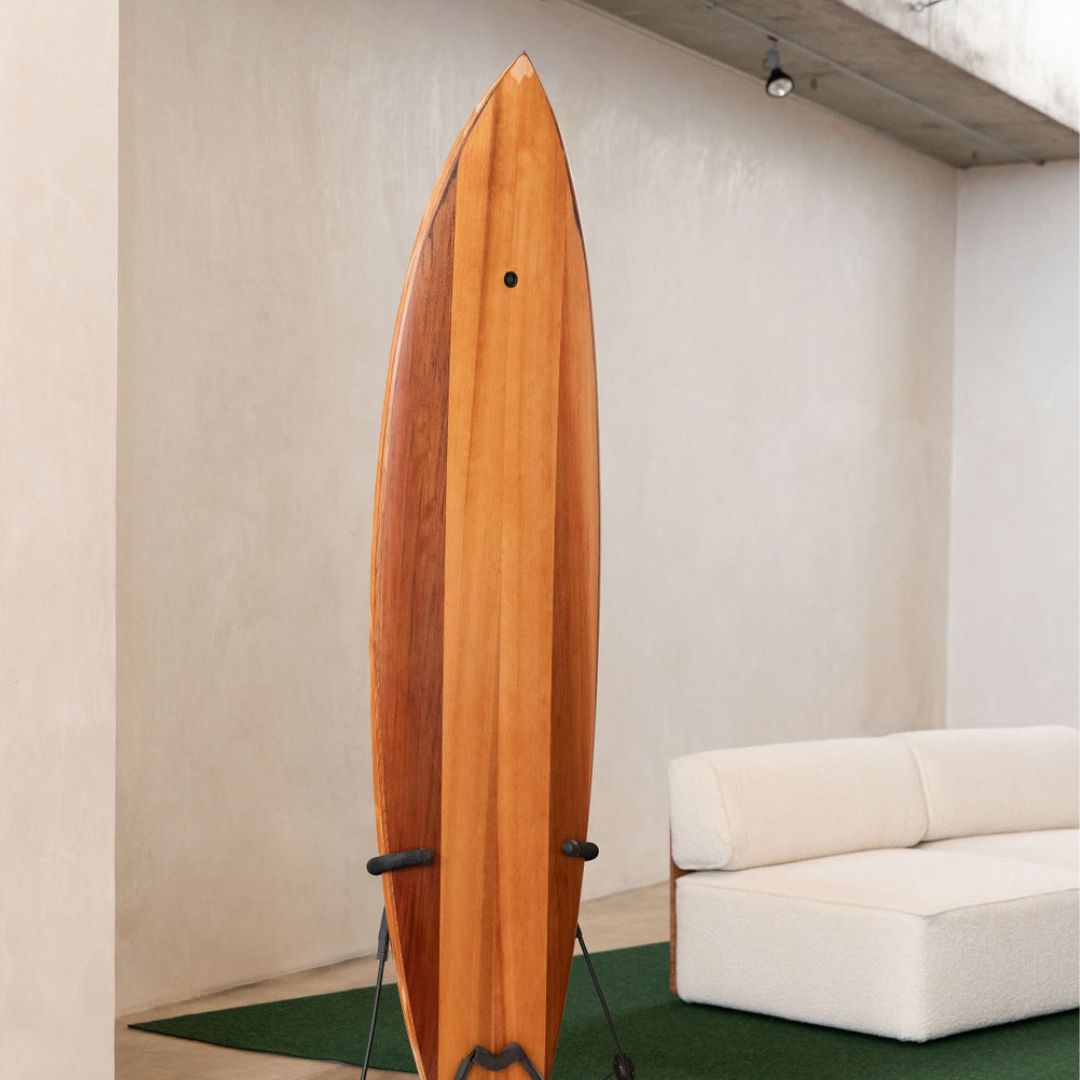
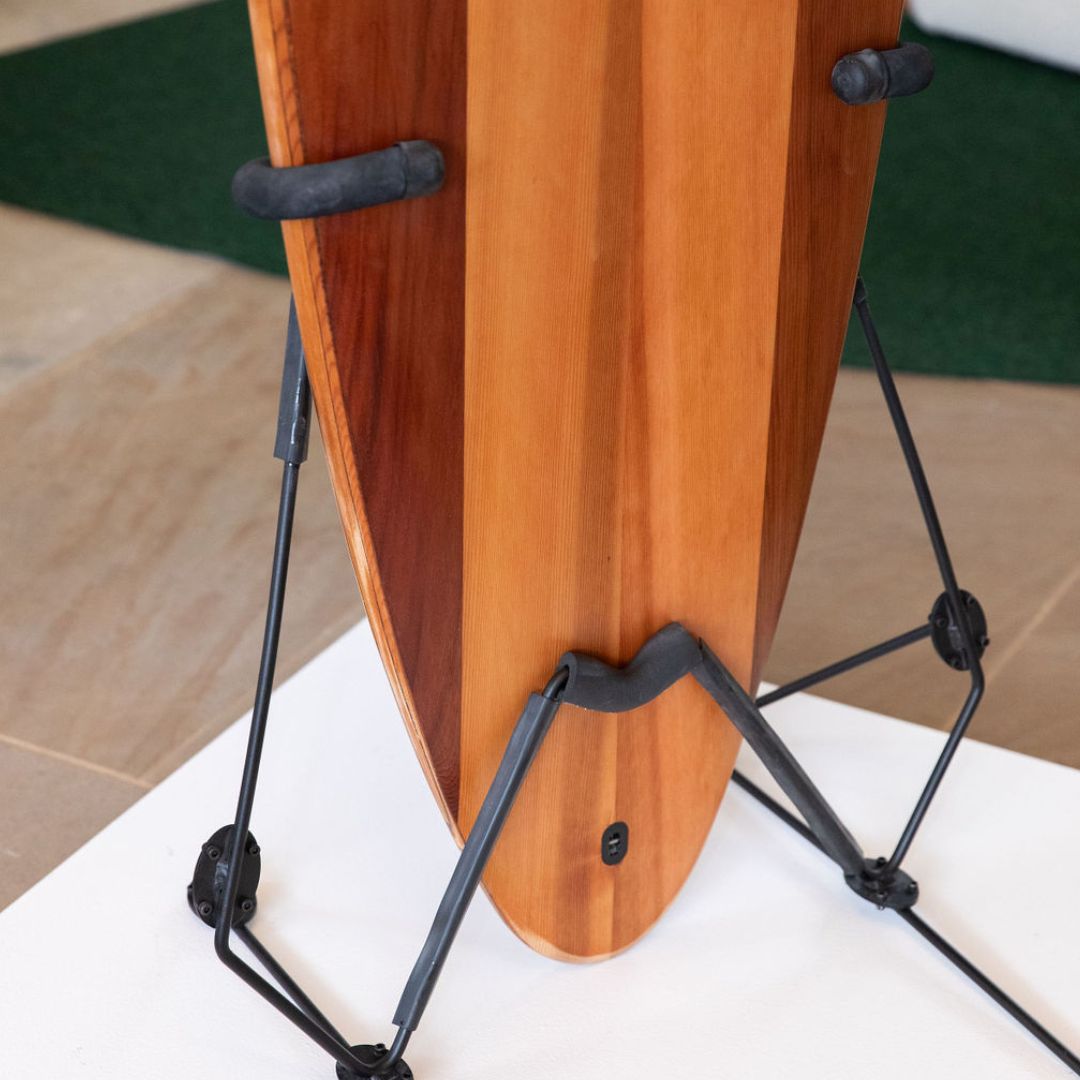
Benjamin Grieve-Johnson
I’m a maker with a background in philosophy. I choose to limit myself to hand-tool processes and non batch-production wherever I can in order to cultivate a design idiom of vitality (that is, oriented around human-life rather than the project of totalised technology). I work in my small studio in Moonah, Hobart.
Quite a lot has changed here in recent years; some of it even for the better. Tasmania Makes is an overdue opportunity for a new expression of Tasmanian Design and Craft identity and I’m very excited to be able to contribute to it.
Other Furniture

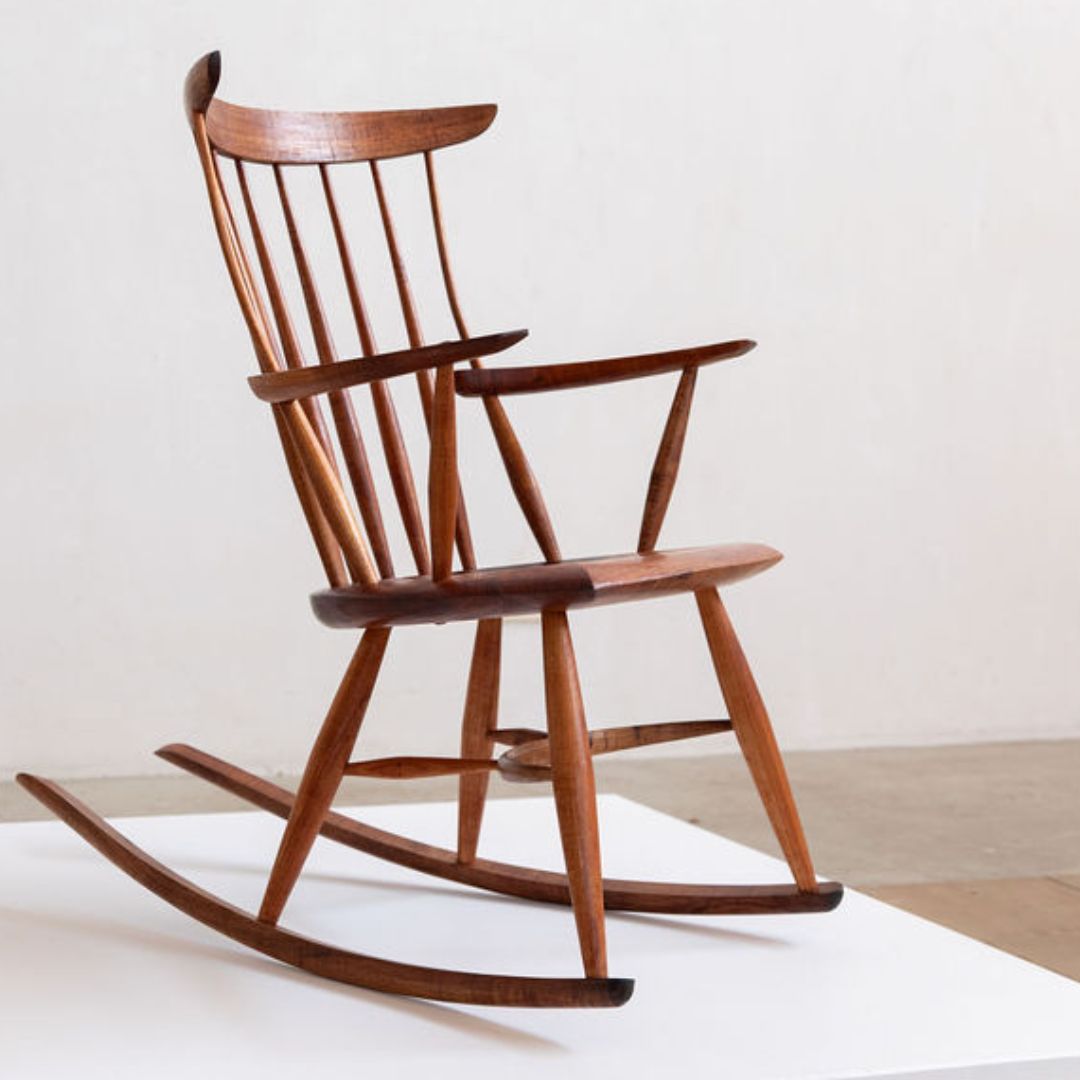
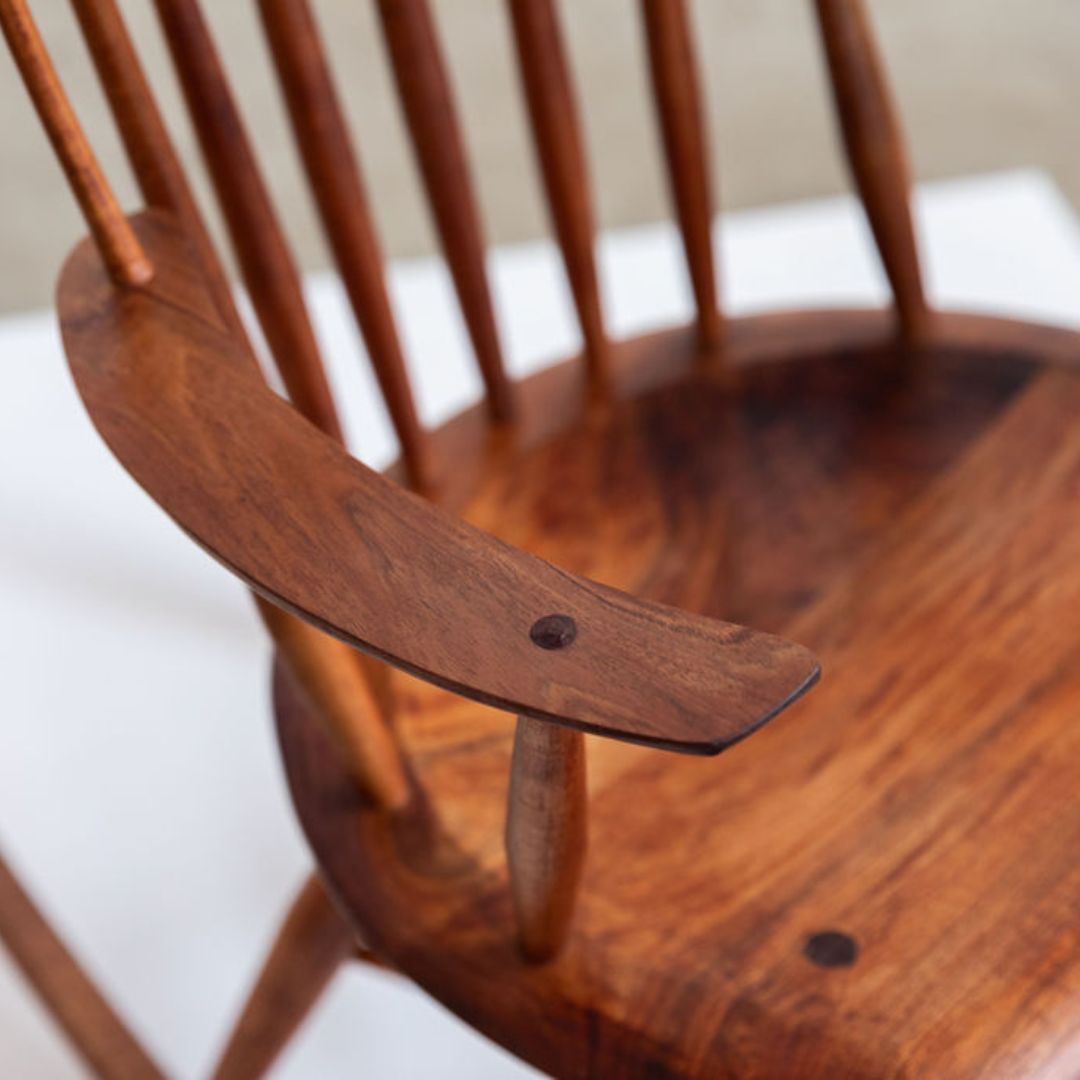
Tīd
Tīd, by Ben Grieve-Johnson, is part of a series of contemporary pieces made with non-industrial techniques under his label Other Furniture. Its surfaces retain the signatures left behind by the hand-work that created them and are intended to actively engage the user. The interplay of light over facets creates a visual dynamism while textures both hidden and obvious offer opportunity for tactile interpretation. The result is an object both rich in qualities and unusually transparent about its genesis.
Manufactured by Other Furniture
Materials: Tasmanian blackwood, hide glue, tung oil, bees wax

Elliot Hall
Elliot is a young, environmentally-inspired designer who has created a 'wave-inspired' sound speaker for this exhibition.
Biosphere is a speaker that combines sculptural aesthetic with high sound quality through an engineered tapering form that acts as a sound dampener for resonating sound waves.
The flowing form is influenced by organic structures and can be associated with a diversity of natural elements. The structure has a particular focus on growth and movement as well as representing the vibration of pulsating sound waves through its stepped design.
Elliot's Instagram
Biosphere
Biosphere is a speaker that combines sculptural aesthetic with high sound quality through an engineered tapering form that acts as a sound dampener for resonating sound waves.
The flowing form is influenced by organic structures and can be associated with a diversity of natural elements. The structure has a particular focus on growth and movement as well as representing the vibration of pulsating sound waves through its stepped design.
Prototype
Materials: birch plywood

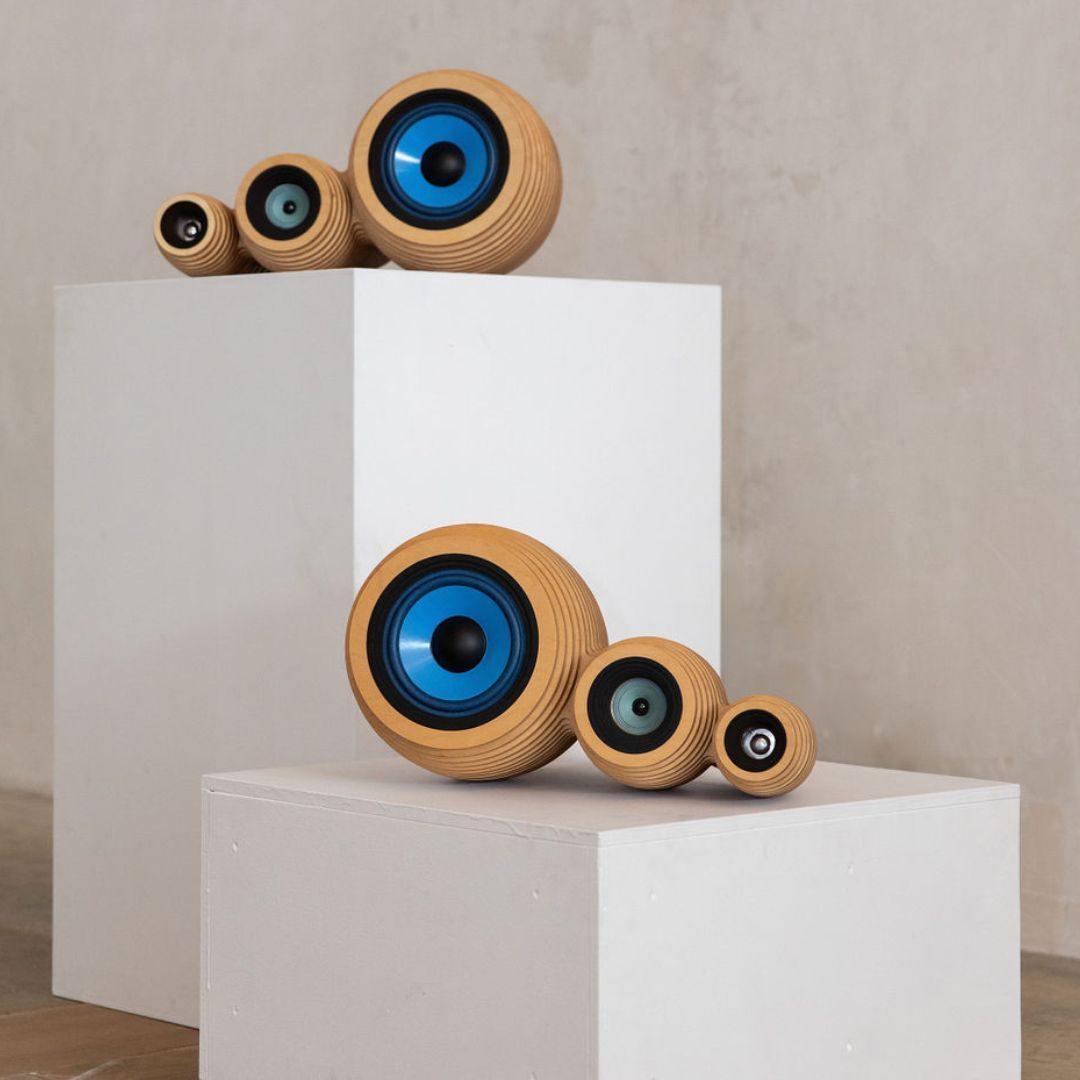
Sean O'Connell
I am a jeweller and metalworker who has been living off his work for 20 years. I have won contemporary jewellery awards both here and overseas, and my work is held in collections such as the National Gallery of Victoria and the National Gallery of Australia. In 2017 I completed a PhD in Fine Arts, resulting in a parallel strand of work which centres around photography and experiments in visualising force and inner material structures.
In 2019 I moved to Tasmania from the Blue Mountains near Sydney, and have been trying to reformulate my making to better suit my location.
One Orange Dot

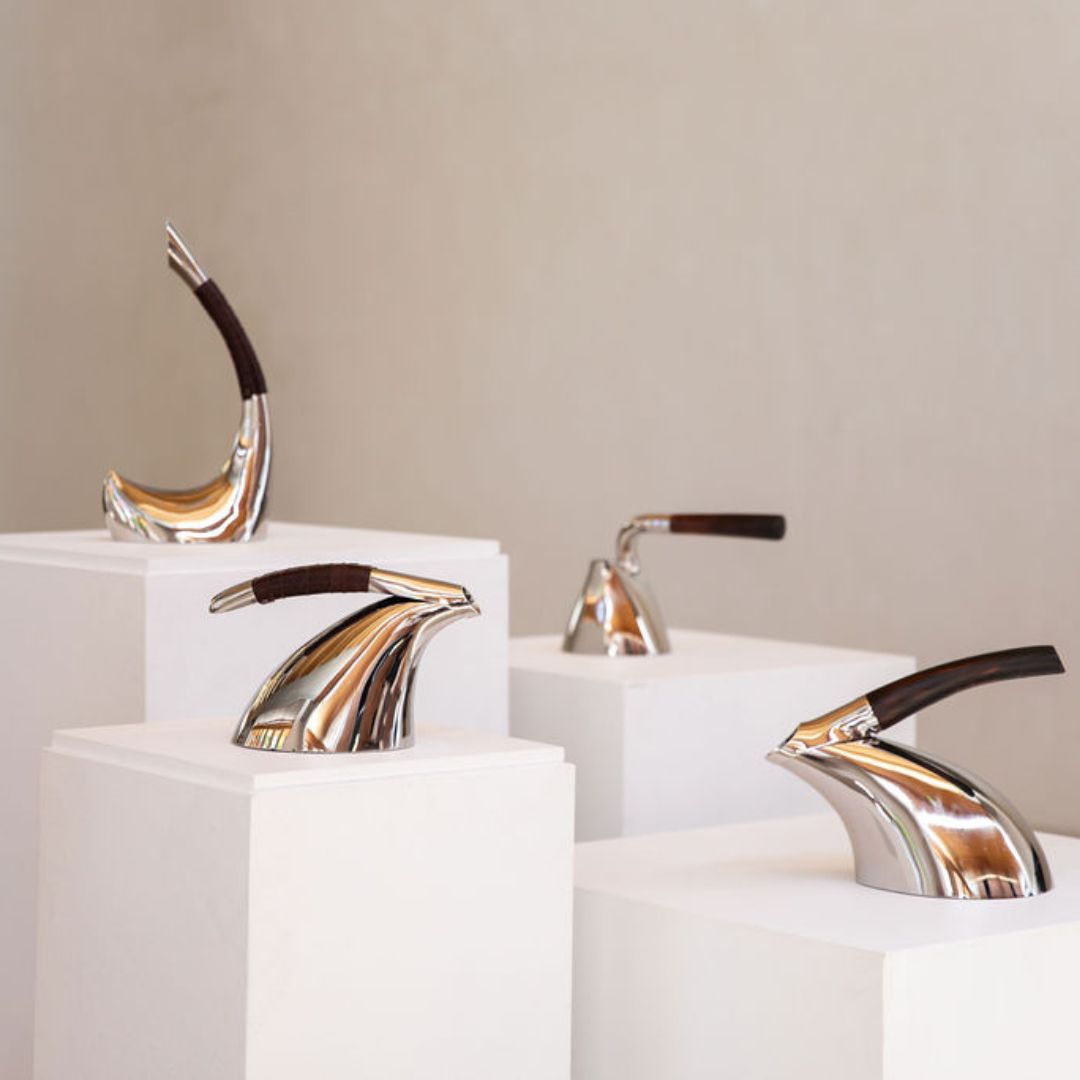
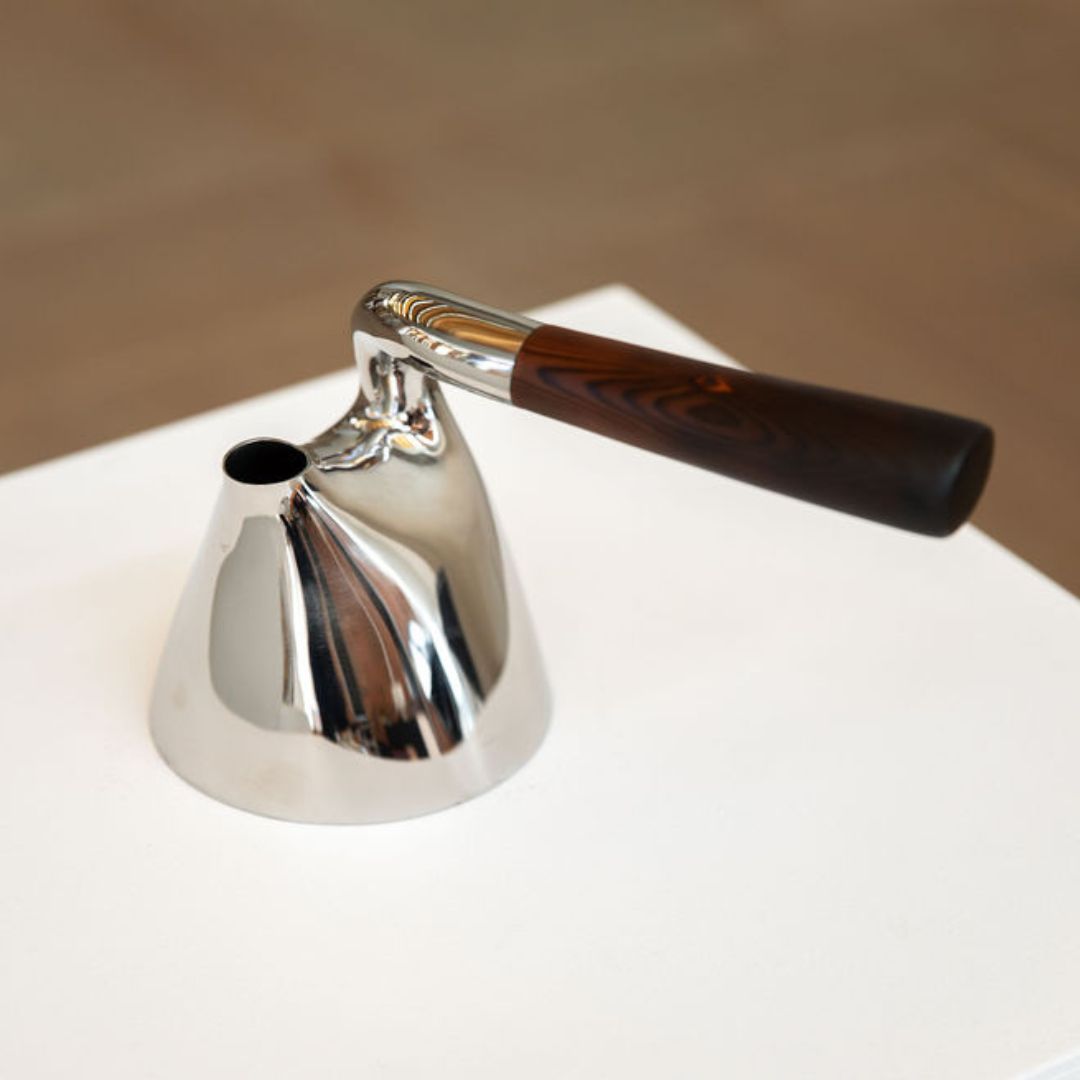
Kettles
These shiny water kettles have been hand formed from stainless steel sheet, their forms evolving under hammer and file. They are made to last a lifetime, from strong simple materials that age well. Their graceful quirky beauty adds an intimate sense of joy to the everyday act of boiling water.
Custom prototypes
Materials: stainless steel, celerytop pine, kangaroo leather

Sabine Pagan
I am an academic who has recently relocated to Tasmania. I am a proficient jewellery and object designer, and am connecting to Tasmania through rocks and raw material to create original and unique pieces of jewellery.
The Poetics of Materials is a body of jewellery works that examines the value of materials in shaping our relationship with our surroundings. Since moving to Tasmania 18 months ago, I have developed a unique material vocabulary informed by the local natural environment. This approach acts as a platform for navigating my own way into a new place, guided by my existing creative practice, encounters and sensibilities with materials, places and spaces.
Sabine's Instagram
The Poetics of Materials
The Poetics of Materials explores the value of materials in shaping our perception of and connection to our surroundings. Melding the natural with the manmade, these artifacts reference particular moments in time and place. Each object attempts to capture the intrinsic nature of materials, revealing the features and qualities that prompt immersive and sensorial encounters. Collectively, they create a terrain that reflects on the fragility of our environment while unearthing its material beauty.
Materials: various
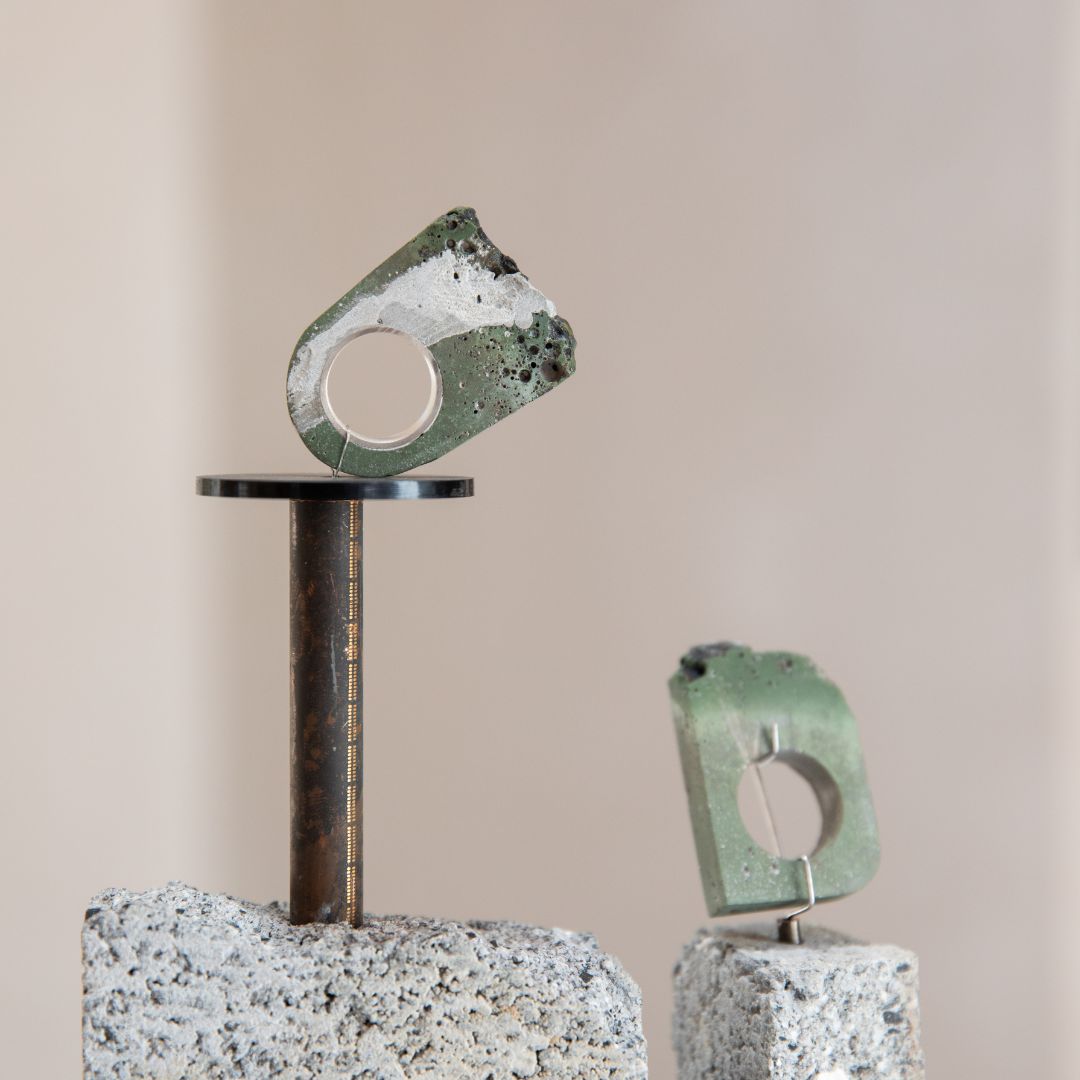
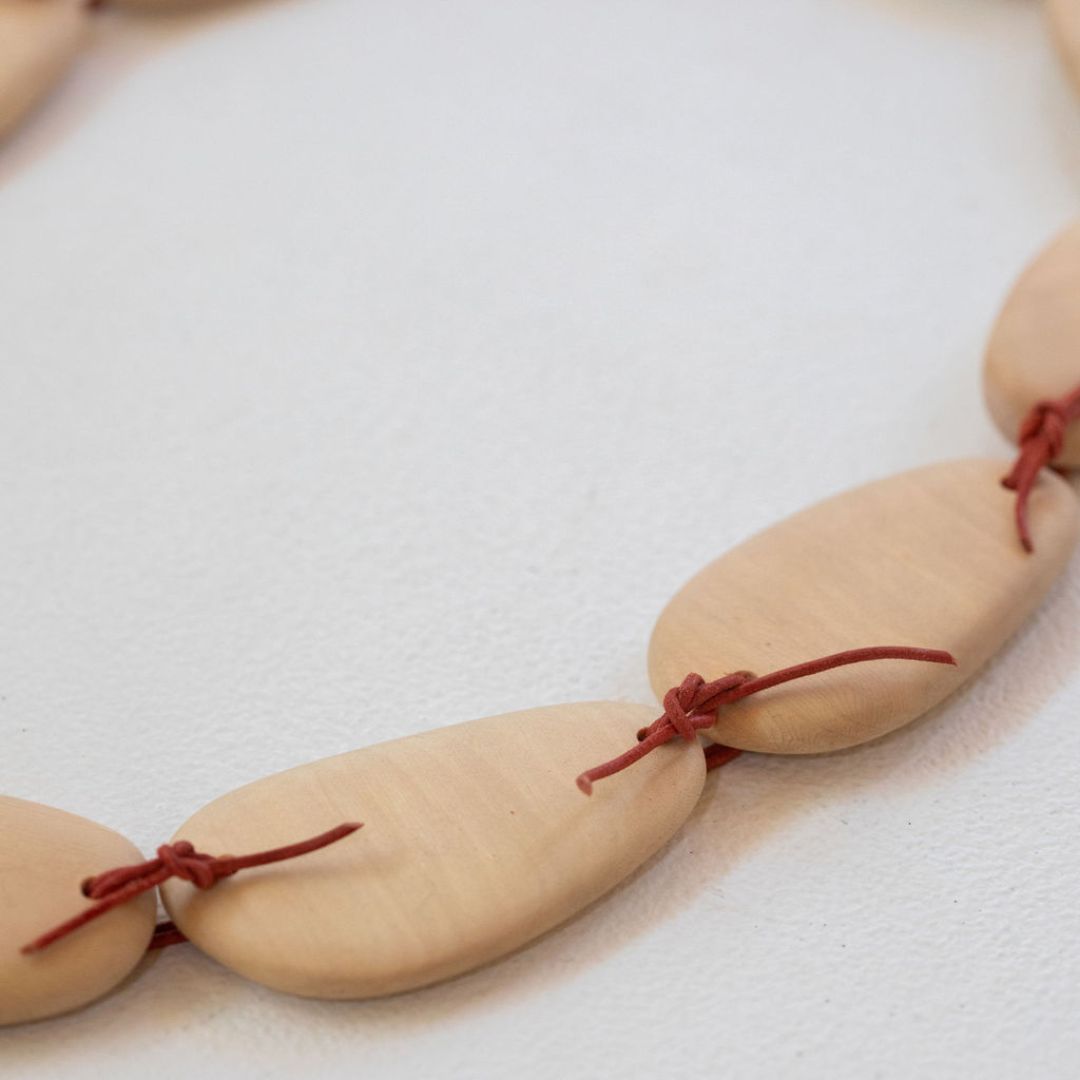
Matthew Prince
Matthew Prince is a furniture designer based in Launceston, Tasmania. His practice ranges from designing bespoke pieces for private clients, to developing furniture products for large-scale production. With an Associate Degree from the Australian School of Fine Furniture and a Bachelor Degree in Furniture Design UTAS, Matthew’s training provides a strong foundation as both a designer and maker. His ability to draw connections between conceptual development and practical execution is at the core of his practice, and provides a basis for innovation.
Matthew aims to develop work that is holistically elegant, expressive in its materials and honest in its making.
Matthew's website

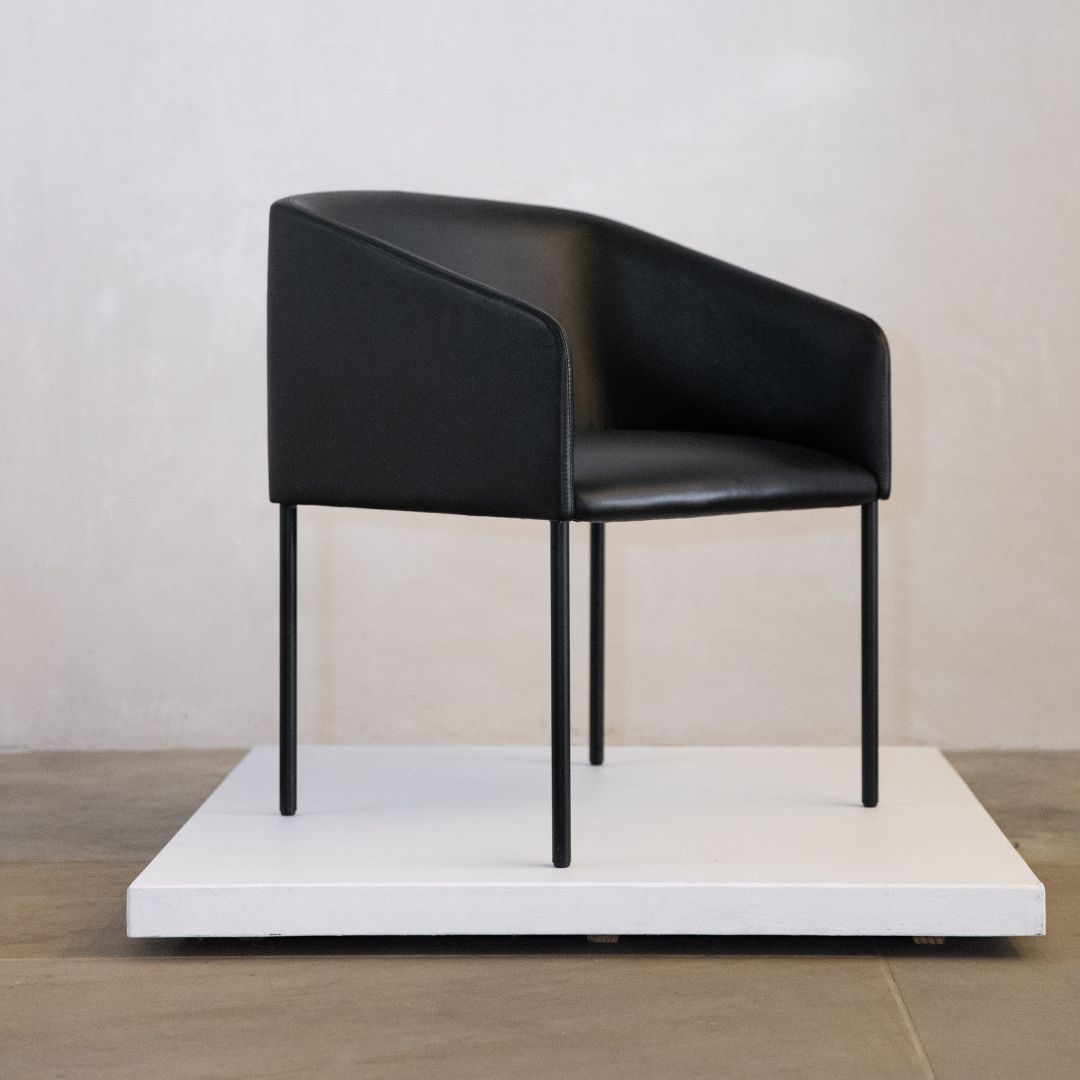
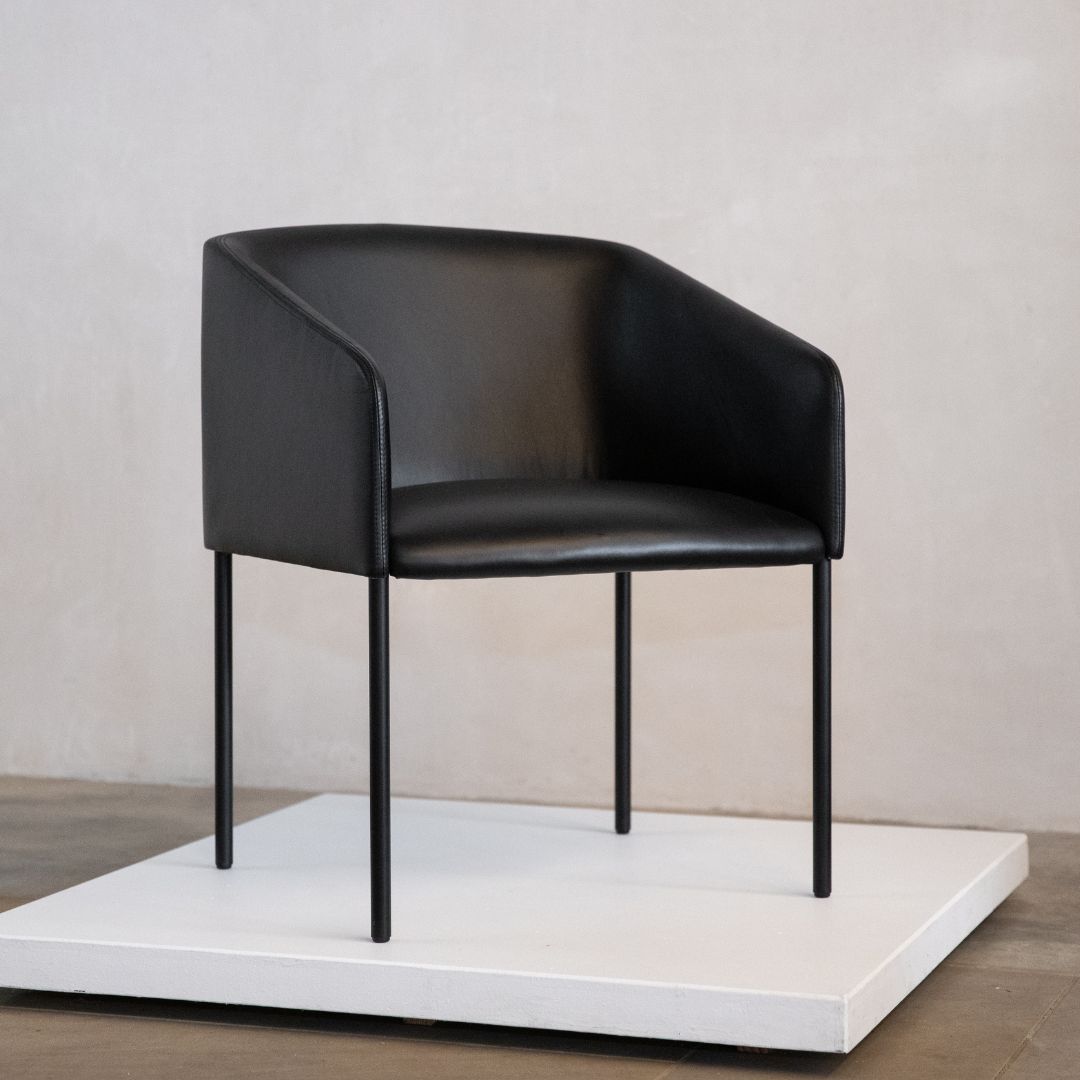
Vault
Vault is a dining chair intended for both residential and commercial applications.
The project intent has been to bring together a range
of neighbouring industries to achieve a high level of production efficiency and scalability. Working closely with a local upholsterer, Vault utilises a range of unique upholstery methods to realise complex geometry and ergonomic requirements.
Further development of this project will include expanding the design into a range of seating types including lounge chair, occasional chair and barstool.
Prototype
Materials: steel, plywood, upholstery
Scott van Tuil
VAN TUIL Design Studio was established by Scott van Tuil upon graduating from the University of Tasmania with a Bachelor of Environmental Design. Working across a diversity of modes, materials and scales, the desire is always to create objects that are beautiful in form and function, and meaningfully contribute to the spaces they inhabit. Located in Hobart, Tasmania, this small island at the edge of the world continues to inspire and influence.
Van Tuil - Website
Van Tuil - Instagram

Compose Lounge
Compose is a modular lounge system that celebrates the experiential qualities of materials.
Arranged together, the shaped timber back elements create a rhythm of form enabling the product to meaningfully delineate space in open plan commercial and residential settings. Comprising of single, double, corner, and ottoman pieces, Compose is highly configurable. Utilising high quality, carefully selected materials, Compose offers a luxurious lounging experience.
Proudly designed and manufactured in Tasmania.
Limited serial production manufactured by Scott van Tuil and select local manufactures
Materials: Tasmanian oak, upholstery
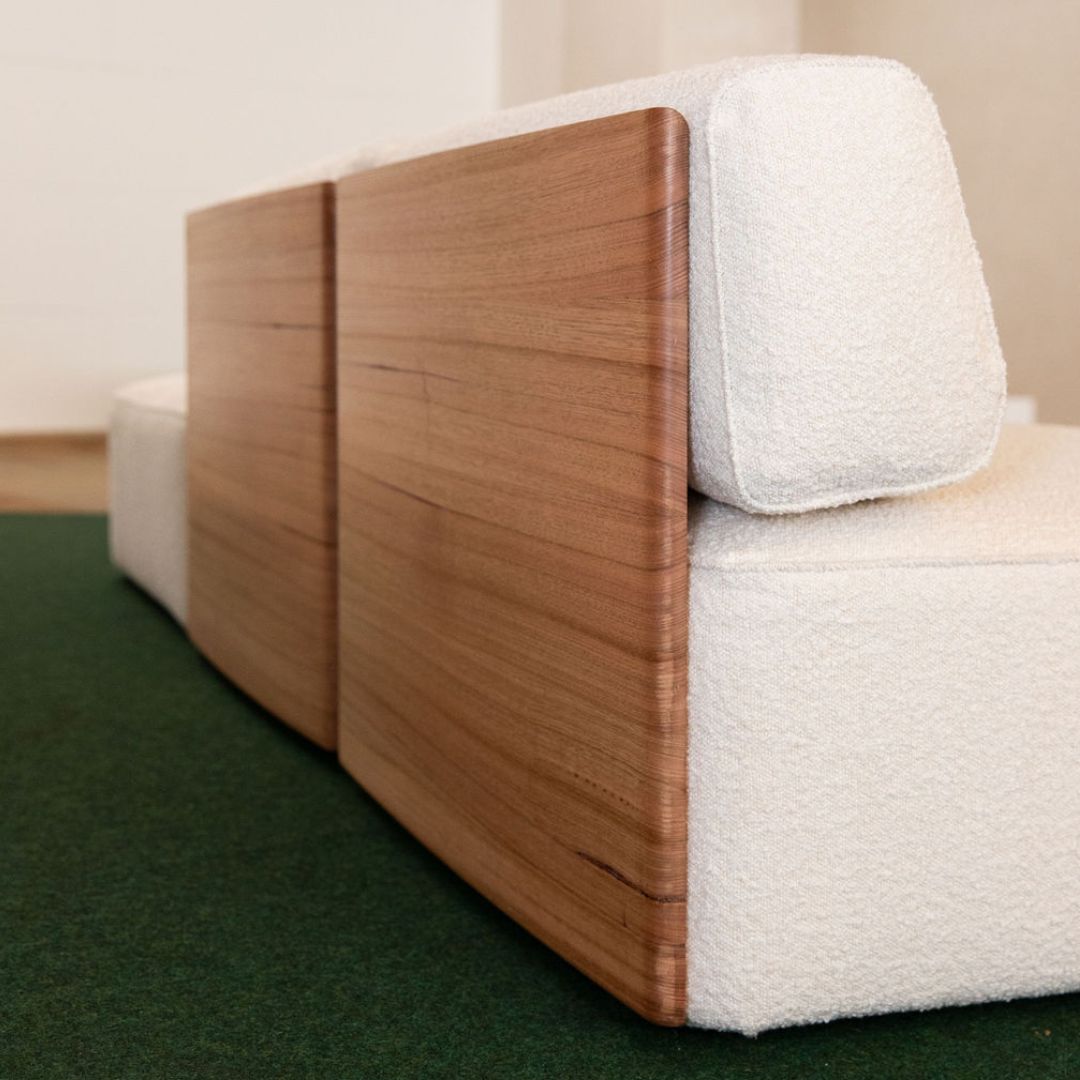

Isaac Williams
Isaac Williams Design Objects is the studio of lutruwita (Tasmanian) designer and artist Isaac Williams. Born into a maker culture in rural northeastern Tasmania, Isaac completed his Bachelor of Environmental Design (Architecture) at the University of Tasmania. His work spans both client and personal projects, ranging from visual art to functional objects.
His current practice is focused on the curation and refinement of discarded materials, viewing waste as archaeological artefacts, and exploring the interplay between the circle and square through form and symbology. These concepts are expressed through pencil and digital drawings (graphic and CAD) and the creation of visual art and functional objects from found materials.
Isaac Williams Design Objects - Website
Isaac Williams Design Objects - Instagram

Photo credit: Eden Wilday

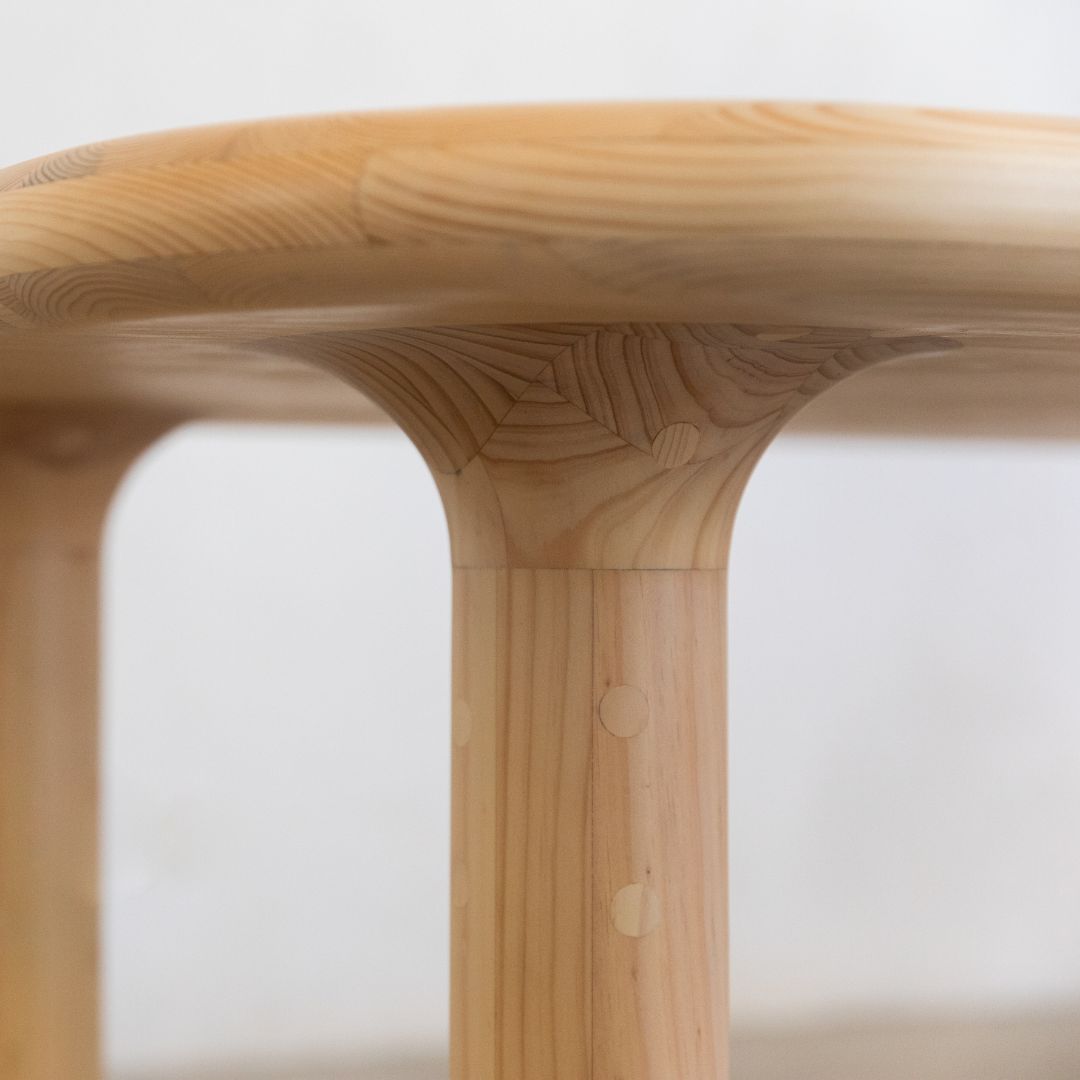
Rebirthed Pallet Dine
The result of a creative practice centred around the exploration of waste materials, Rebirthed Pallet Dine is constructed from 100% discarded single-use pallets. The identification of this abundant material source/wastage informed the design’s starting point.
During the development of the piece and with the support of a Northern Tasmanian Waste Management Group Grant, a broadly applicable process for rebirthing discarded timber has been established.
The piece takes a calm minimal form, to offset the unavoidable visual busyness created by the timber lamination system, and the removal of all hard edges explores returning the timber to a more tree like form.
Final Prototype
Materials: found pallets, finished in hard wax oil
Funding Bodies
Tasmania Makes is proudly sponsored by HydroWood, Timber World and Waverley Woollen Mills.
Design Tasmania is assisted through Arts Tasmania by the Minister for the Arts, by the Australian Government through Creative Australia, its arts funding and advisory body.
